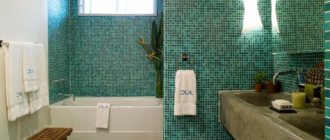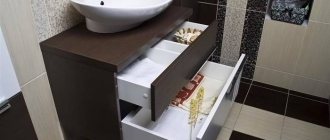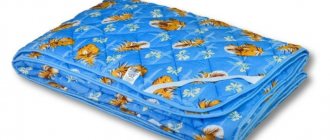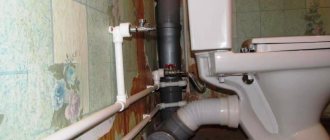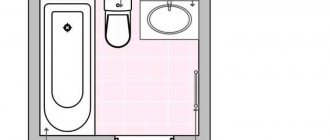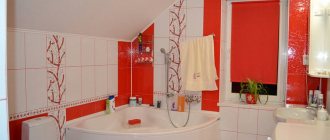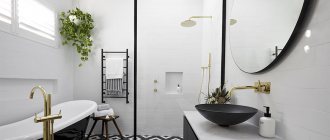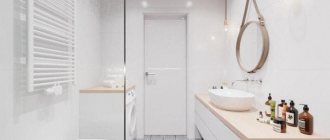Repair and decoration
04/22/2018 Anastasia Prozheva
Photo Quite often in apartment layouts small rooms are allocated for bedrooms. This shortcoming can be corrected by visually expanding the space by finishing the ceiling with a mirror. Such a ceiling will help to visually increase the space by almost doubling. Mirror ceilings in the bedroom are widely used today. The height of the ceiling from mirrors in the bedroom becomes significantly higher, and the room is filled with more light. The general appearance of the room will take on a festive look, reflect the beauty of the walls, and emphasize the resting place - the bed. Use material made of plastic, metal or glass. This also includes glossy stretch coatings. Of course, in this case we are talking about glossy stretch coverings in the bedroom. Tensile mirror coatings have certain advantages, such as high moisture resistance, safety, and seamlessness.
The main options for mirror ceilings by color and surface type.
Perhaps the most original design solution is a dark-colored mirror ceiling.
Saturated dark gives a greater reflection effect and makes the room cozier.
Mirror coatings made of polystyrene are in quite high demand today. They are very easy to install, without fastening systems. The finished coating is opened, the roll is unrolled and left to straighten, after which it is glued on with the adhesive side. The work is not at all dusty, quite fast and safe.
There are also suspended mirror ceilings for residential premises.
Design options for a mirrored ceiling
One of the most attractive options involves installing continuous panels. This design maximizes the area of the room. But there is a drawback: this material is quite heavy and fragile. Therefore, it is rarely possible to cover the entire area of a room with one piece of glass. The only exceptions are small hallways, baths, and toilets. In other cases, the mirror is combined with other materials - plasterboard, tensioned fabrics, etc. The joints between the panels can be hidden under profiles, ceiling beams, or beveled.
Often, mirrors are used to zone a room, highlighting, for example, a dining area or a space above the bed.
Another way to use mirrors in ceiling decoration is to place them around the chandelier, creating a panel rosette. This is not only beautiful, but also practical, since the light from the chandelier lamps will be enhanced by reflection in the mirrors.
Triangles are another interesting way to design. Mirror glass is cut into fragments of equal or different calibers. Panels are already being assembled from them. This design is more in harmony with modern styles - high-tech, modern, fusion. The parts can be cut and attached so that they imitate a broken mirror. The composition looks nontrivial.
In rooms where you need to expand a narrow space, a striped design is suitable, when silver gloss alternates with matte materials. Another interesting way is to decorate the room with round mirrors that resemble portholes. Then it seems that there is a hole in the ceiling. This solution also raises the ceiling, creating lightness and delicacy. The advantage of this design is that only a partial reflection of the room is transmitted - this is less distracting from business, conversation and other activities.
Pieces of mirrors can be inserted into a variety of materials - from wood to suspended ceilings.
Increasingly, plastic with a reflective surface is being used in both residential and commercial premises:
- acrylic;
- polystyrene;
- polyvinyl chloride;
- stretch vinyl films, etc.
The growing popularity of these materials is understandable. As a rule, they are more practical in maintenance, processing and installation, lighter and more durable.
Mirror ceilings also differ in the type of fastening and can be:
- hemmed - the material is glued or fixed using fasteners;
- glued - using a special compound on the back side of the film, the coating is fixed like wallpaper, no other fasteners are required;
- suspended - the panels need to be fixed to a special frame;
- tension - the mirror film is stretched between the walls.
Let's consider each option in more detail.
About the benefits
- It's no secret that mirrors in the interior are a great way to play with space. Mirrored ceilings visually expand the boundaries, make the room brighter, and create a special mysterious atmosphere.
- Even a mirror surface does not exclude the possibility of choosing the ideal shade for a specific interior.
- Mirror tiles hide uneven floors.
- Due to its high moisture resistance, mirror ceilings are often used in bathrooms.
- With this design solution, you can combine aluminum, glass and cassette coverings. Mirror plastic ones are more practical, but less moisture resistant.
- Easy to care for. It is enough to wipe the mirror ceiling as it gets dirty using a rag and a special solution for glass surfaces.
Classic mirror
A real mirror ceiling is the only one made of silicate glass, the back surface of which is coated with amalgam. This is the most expensive and complex type of finishing due to its fragility and heavy weight. But this material has an advantage over all others:
- reflectivity reaches 100%;
- the percentage of distortion is minimal;
- glass does not react with most chemicals, so it is easy to clean from dirt and dust.
One of the problems that owners of mirrored ceilings face is the fragility of the material. Glass breaks even if a champagne cork is shot, and there is a risk that fragments will fall on your head. The disadvantage is eliminated by gluing a protective or anti-splinter film made of polyethylene. With such a coating, even if the mirror breaks, cracks will only form, and the parts themselves will remain on the ceiling. This film is also recommended for use in damp rooms to create a barrier to moisture, which causes amalgam corrosion.
Often mirrored ceilings are decorated with engravings, patterns obtained by sandblasting, and airbrushing. This interior also looks elegant and unusual. The surface itself can be either perfectly smooth or broken. But such decoration makes washing and cleaning difficult. Curved mirrors are also used, visually distorting the shape of objects.
The canvas is attached with glue or self-tapping screws. But the latter method is less convenient, since you need to have a special tool and have skills in glass processing, otherwise the panel will crack and be damaged. Installation is easier with adhesives.
You can make a mirror ceiling with your own hands. They first draw up a sketch and think through the layout of the decor. It can occupy the entire ceiling or only part. Then examine the work surface. If the coating is porous, it is pre-prepared - puttied, painted with varnish or paint, but not water-based. Uneven surfaces are first leveled. For small flaws, you can hem a backing - for example, sheets of plywood, and installation will be simplified. All that needs to be done then is to prime the work area.
For cutting, use a diamond glass cutter ruler, under which you need to place several pieces of rubber so that the tool does not fidget on the glass. The excess part is broken off by carefully tapping the back side with a small hammer. They always cut along the front part (the amalgam layer is applied at the back).
To fix it on the ceiling, you need a special glue - Novasil S16 with silicone rubber, Multifix liquid nails for mirrors, Titan epoxy compound adhesive, etc. These materials not only reliably hold the weight, but also protect the amalgam from damage by water.
For the installation of glass slabs, products with ultraviolet curing are not suitable, as they do not provide the necessary adhesion. Solvent-based products that cause stains on the ceiling are also not suitable.
Installation of canvases is carried out as follows:
- Before starting work, the plywood is primed with an acrylic latex product and left to dry for up to 8 hours.
- Each tile is glued with pieces of double-sided tape around the perimeter and rolled with a wallpaper roller to ensure better adhesion.
- Remove the protective strip from the tape and apply the selected glue - in the center and along the edges of the part.
- Place the mirror on the ceiling and press it against the base for a few minutes.
- The structure is fixed, for example, using transparent tape, which is not removed until the glue has completely dried.
If the ceiling is decorated with small details, then it is better to pause work after the first elements to observe the quality of adhesion. If the material does not fall off, this fastening method is safe and work can continue.
When the mirror occupies only part of the ceiling, after the glue has dried, they begin to install the lower level - for example, a plasterboard box or the rest of the surface. The edges of the mirror can be disguised with moldings and baseboards.
Additional recommendations
Bathroom mirrors above the sink are subject to more stress than in other rooms, so they must withstand frequent fogging. It is best to purchase them in plumbing stores or from manufacturers producing models for bathrooms. If you don’t like any of the finished products, then a silver-plated mirror will be a worthy alternative. It will cost more, but it will last longer than a product with an aluminum coating.
You should follow the recommendations of experts on the selection and placement of the product, as well as correctly determine the height of the mirror in the bathroom:
- Image quality – the reflection should not “float” and distort the image.
- The mirror should not have sharp edges that could cause injury, or other defects such as air bubbles, scratches, chips, or cracks. The thickness of the bevel is the same on all sides.
- Two sinks in the bathroom, standing next to each other or united by one cabinet, are usually decorated with one canvas. However, you can hang two identical products by placing a lamp or decorative elements in the wall.
- For rooms with poor ventilation and high humidity, it is better to take the product without baguettes.
- The place for the mirror should be as safe as possible. It is not recommended to install it too close to furniture and plumbing.
- If you intend to place several paintings, they must be identical in style.
Thus, the installation height is regulated primarily by ease of use. When determining the required level, you need to take into account the height of the smallest and tallest family members and the dimensions of the bathroom. Then the placement of the mirror will not cause any complaints.
The image should be clear, without distortion The mirror should not have sharp edges that could cause injury Two sinks installed on the same cabinet are usually decorated with one mirror
If you plan to place several paintings, they must be identical in style
It is not recommended to install the mirror too close to plumbing fixtures and other furniture
Suspended ceiling Armstrong
One of the ways to arrange a mirror ceiling is to use suspended systems. They are:
- open;
- hidden.
Armstrong ceilings belong to the second type. The basis of the structure is a metal frame consisting of a T-shaped profile, forming rectangular cells that are filled with mirror plates.
Their installation is quite simple, so they are very popular in decorating large rooms. In addition, one damaged panel is easy to replace - you do not need to disassemble the entire finish. Often such repairs are carried out in rooms where it is necessary to hide ventilation, communications, air conditioners, etc. Spot or raster lamps are used to illuminate the room.
Armstrong systems give wide scope for the designer's imagination. Mirror plates can be combined with ordinary mineral, translucent materials, allowing you to install a hidden strip with diodes and turn the ceiling into a lamp.
The second type of systems is represented by fittings and facet models. The first ones are mounted together with chrome strips 10-30 mm wide, which hide the seams between the individual finishing elements. Such systems are combined with LED strips, lamps, and chandeliers. At the same time, it is impossible to hide communications behind such a mirrored ceiling and it is impossible to install spotlights. But replacing a separate panel is also easy.
Faceted ceilings look very interesting indoors. They are so named because of the edge beveled at an angle of 45°C, the width of which reaches 10–30 mm. This not only changes the appearance of the tile, but also creates beautiful reflections that occur when light hits the edges. These panels are often used for interior decoration. The elements are mounted end-to-end without seams or connecting parts. They are secured with silicone sealant.
The beveled ceiling creates beautiful reflections on the walls due to the rays of light reflected in the polished edges. Therefore, the room takes on a solemn appearance. For lighting with these ceilings, recessed lamps or chandeliers are installed. The disadvantage of the latter type of design is that they are not dismountable.
A mirrored suspended ceiling is not always silver in color; other shades are also popular:
- bronze;
- graphite;
- green;
- rosolin, etc.
The panel sizes are also different:
- for Armstrong systems - 60x60 cm and 120x60 cm;
- for faceted ceilings - 30x30, 40x40, 60x60 cm;
- for fittings - 31.5x31.5 cm, 39.5x39.5 cm.
Tiles are laid in different ways:
- straight rows;
- diagonally;
- from the center.
This finish is combined with glass, plastic, and other panels - colored, satin, matte, with internal lighting.
Ceiling lighting ideas
Lighting plays a major role in decorating the ceiling surface.
- Chandeliers.
- Spotlights.
The photo shows a mirror ceiling combined with a chandelier.
The light emanating from the lighting fixtures will be refracted by the mirror, reflected and beautifully scattered in the room. Various lamps effectively highlight the shiny surface, place accents in the interior and make it truly individual.
Mirror tiles
Another type of finishing is facing materials such as tiles, which are also often laid on the ceiling. They are in form:
- square;
- rectangular;
- triangular;
- hexagonal;
- trapezius.
The coating can be continuous or in the form of a mosaic.
Tiles are available with sides ranging from 10 to 81 cm. The most popular colors are silver, gold, graphite, although other variations are possible. The edges can be straight or beveled. Installation is carried out in the same way as described in the second section.
Choosing complex shapes
Many people prefer complex and original ceiling shapes. This becomes available for those bedrooms that have sufficient ceiling heights. In this case, it will be possible to install multi-level ceilings, which will be complemented by mirror surfaces. The result will be harmony in the room.
A simple but interesting ceiling design made using square-shaped mirrors. Aesthetic design with mirrors with a matte surface and an ornament on the ceiling, where colored lighting is additionally used.
Often complex ceilings are made in such a way that their individual part follows the shape of the object in the room. These can be round tiers above the bed, repetitions of the shape of the headboard or bedside table. You can choose any item in the room, which in combination will look aesthetically pleasing, and the mirror will become a harmonizing addition.
Decorated mirrors with floral motifs and matte structure as ceiling decoration
Stretch ceiling with mirror effect
Such systems can also create a fairly clear reflection. And we are not talking about glossy canvases, but about real films that replace a mirror - these also exist. An uninitiated person, when looking at the ceiling, may think that there is a mirror hanging above it.
Mirror films are made of polyvinyl chloride and come in several shades, the most common being silver and gold. One of the disadvantages of the finishing material is its small width - 130 cm. It is not recommended to solder reflective PVC film, since the seams will be noticeable. Therefore, such vinyl is combined with other materials, more often with gypsum plasterboard.
Mirror stretch ceilings have advantages over glass:
- easy;
- does not break;
- specialists complete installation in 3–4 hours;
- the ceiling structure is lowered by 4 cm with a single-level finish;
- no need to level the base surface;
- it becomes possible to hide communications.
Among the disadvantages of mirror films, experts note:
- small width;
- greater reduction in height if the base covering is curved, with a slope;
- the cost is 3 times more than the price of varnish materials.
Another significant drawback is that the film practically does not stretch. Therefore, only certain companies work with the material.
Types of ceilings
As a material, many perceive the mirror too unambiguously. At the same time, the classification of this finish is very, very extensive. And we should start talking about it directly from the reflective materials themselves. So these could be:
- classic mirrors on glass;
- polystyrene or organic glass with glued mirror film;
- suspended ceiling with a mirror effect;
- aluminum sheets;
- mirror PVC film.
If we take the design of the ceiling as a basis, it can be solid, panel, or tiled. A stretch ceiling is continuous and has no joints. The panel structure is made up of rectangular fragments that are quite large in size. Tiled ceilings are also called cassette ceilings.
If we focus on the method of fastening the structure, then the ceilings can be hemmed, suspended, or suspended. The first type of material is attached by sewing to the ceiling, which has an adhesive base. For the suspended structure, a special frame is used, mounted just below the main level. For tension structures, a special fabric is used, which is stretched between walls or inside other multi-level structures. But it’s worth talking in more detail about some designs of mirrored ceilings.
Mirror plastic panels
Plexiglas can also be turned into a mirror. To do this, an amalgam is applied to the back side, providing a reflective effect, and a protective film is applied on top. Some manufacturers offer acrylic glass with a self-adhesive layer.
The material can be cut with hand and power tools. But it must be taken into account that amalgam and acrylic heat up differently. To prevent the polymer from deforming, the cut site is cooled.
But mirror acrylic ceiling panels have a drawback compared to glass - they are soft, so scratches quickly appear on them. This is one of the few shortcomings of the material, which can be easily eliminated by gluing a protective film.
Cost of 1 sq. m of coverage - from 2 thousand rubles.
Polyvinyl chloride is another plastic substitute that can be produced with a mirror surface. It consists of a vinyl base on which a reflective and then a protective layer is applied.
The advantages of PVC include:
- low hygroscopicity (almost does not absorb moisture, like acrylic);
- resistance to household chemicals;
- the ability to process it with any hand tool;
- elasticity, due to which it is used even on bent finishing elements;
- the ability to fasten parts using soldering or adhesives;
- ease of care.
Some manufacturers offer models of PVC plates with a self-adhesive coating.
The cost of PVC plastic per 1 sq. m - from 1700 rub.
Tips and tricks for caring for mirrored stretch ceilings
Caring for a glossy coating is practically indistinguishable from other PVC coating options. To ensure that the surface continues to remain beautiful and smooth, you must follow the recommendations:
- Any dirt and dust accumulations are clearly visible on the film. Therefore, cleaning must be done as often as possible.
- Thanks to the presence of a special varnish coating that gives the canvas a glossy effect, it has a higher degree of protection. Therefore, chemical detergents can be used for cleaning. The exception is powdered abrasives, which can scratch the surface of the ceiling, and aggressive components containing acids.
- PVC can be cleaned with soft rags, napkins and sponges. It is not recommended to use tools with a hard surface. Under the influence of mechanical load, scratches and cracks may form on the film, which will negatively affect the aesthetic appearance of the structure.
- PVC coating is not recommended to be washed with hot water. High temperatures can cause the fabric to sag.
Slat ceiling
For this finishing, shiny, perfectly polished aluminum slats are used, 3–4 m long and 10 to 20 cm wide. They are attached to a hanging frame. The color of the front part can also be different - silver, gold, copper, red, blue, etc. It is quite possible to install it yourself.
There are three types of rack and pinion systems:
- open - there are gaps between the slats;
- closed - create the illusion of a continuous canvas;
- with inserts between individual panels.
It is easier to care for the first and last types of ceilings. The disadvantage of aluminum slatted systems is that they take up to 10 cm of height from the room. But this disadvantage is offset by the reflective surface.
Mirror film and polystyrene plates
You can also decorate the ceiling with self-adhesive. The material has an affordable price compared to glass and even plastic counterparts. The film is produced in rolls 45–90 cm wide, the length of one strip is 10 m. The disadvantage of the material is that the working surface must be perfectly smooth - such as, for example, gypsum board.
The film is easy to apply. First, the ceiling is cleared of deposits, dust is swept away, and dirt is washed off with a neutral detergent. Then the covering is glued. The paper base on the reverse side is removed in stages as it is fixed. At the end of the work, a protective layer is removed from the front side, which is designed to protect the finish from damage during repairs. If it is not removed, the “mirror” will appear cloudy.
Polystyrene boards are one of the most popular finishing materials for ceilings; they are also available in a mirror version. It is polystyrene foam combined with synthetic rubber, which provides elasticity and reduces the likelihood of cracking. The top of the lamella is covered with a mirrored polyester film with aluminum. The third layer is a transparent protective one. Slabs are sold in blocks, wound into rolls. If there is no self-adhesive coating, then use PVA-based products.
The material has high physical and mechanical properties that correspond to standard impact-resistant polystyrene and high-strength polyester film, and is able to withstand temperatures up to 70°C. Due to its high flexibility, it is also often used to trim curved parts - for example, arches. But the sheets cannot be bent using local heating, since the film may come off due to this.
Although processing polystyrene boards is simple, there are some special features. To avoid delamination, high-speed drilling equipment is used. Work begins from the mirror side, and laser cutting begins from the back.
The material can be glued to different surfaces. If there is no self-adhesive layer, neoprene-based adhesives and double-sided tape are used. The mirror surface can be processed by milling or engraving.
The weak point of the material is the unprotected ends of the sheets. You need to make sure that no water gets in there. Clean the surface with acrylic glass cleaner applied to a sponge.
Placement nuances depending on the type of product
Finding a place to hang a mirror in the bathroom is rarely a problem. Usually there are few options. The main areas for placement are:
- Mirrors above the washbasin are the most logical solution for the convenience of hygiene procedures and makeup application.
- A cabinet with a mirror allows you to organize your space. At the same time it serves as a storage place for hygiene products, cosmetics, and detergents. If you install a mirror above the sink with hidden shelves, there will be no need for additional furniture.
- Built into a wall or niche. Pros: saving space without sacrificing comfort. The location always looks advantageous, but may require additional costs. In addition, if the canvas breaks or gets tired, it will be much more difficult to change it than just attached to the wall. The recommended depth for such an arrangement of built-in products (including wall tiles) is 6–8 mm.
- Full height. The product can be free-standing, attached to a wall or door. It expands the space, looks impressive, and gives you the opportunity to see yourself from head to toe. When choosing at what height to hang a mirror in the bathroom, you should keep in mind that a product that is too large (up to the ceiling) is not always convenient. And it’s more difficult to keep it clean. It is better if its height is level with the top border of the door frame.
Functionality of a mirror with lighting for makeup, types of products
When looking for a place to install a mirror in the bathroom, you need to consider what objects will fall into the reflection zone. It is highly undesirable to hang it opposite another canvas. Otherwise, mutual multiple reflection will create the effect of an endless corridor.
Above the washbasin
Cabinet with mirror
Wall mounted
Full length
Mirror stickers
Now you don't even have to buy real mirrors to see your reflection. Construction stores sell stickers that replace this material.
It's easy to work with this decor. It is enough to remove the protective film from the double-sided tape located on the back side and press it to the ceiling.
Stickers, like other finishing materials, are available in several colors. Some factories offer up to 11 shades of stickers in a variety of sizes.
The choice of decorative forms is also great. So you can buy sockets for chandeliers, abstract figures - for example, stars, hearts, diamonds, as well as entire panels such as cracked glass, kits for finishing ceiling plinths. The cost depends on the size of the kit.
Matte surfaces and patterns
Today, mirrors come in a variety of shapes, with patterns, frames and other decorative elements. All this forces us to carefully approach the issues of choice. Initially, you need to decide on the type of surface itself and its texture. The following possible options are available:
- The usual glossy mirror finish.
- Muted matte. This option is suitable for those who are attracted to mirrors, but who are not yet ready for radical changes to the interior.
In addition, the mirror surface can be carefully diluted with splashes of patterns and ornaments. This will make it more modest, and the room – universal and comfortable for every person.
Attention! Among the designs, preference is often given to floral motifs, stars, hearts, and drops. This is explained by their practicality for each style, but you can choose more daring solutions.
Photo of an attractive option for decorating a certain part of the ceiling using mirrors with patterns Photo of a cozy and laconic bedroom interior with a matte surface of a round mirror located on the ceiling above the bed
Now you know that mirrors can be located not only in the closet or above the dressing table. With their help, they achieve an original interior. Consider the placement of mirrors depending on your own preferences. This will allow you to get what you want. Additionally, you can watch photos and videos that illustrate interesting interior design options.
Mirror ceilings in the interior of rooms
When choosing a finishing material, first of all, the operating conditions are taken into account. Designers recommend stretch, glass, and slatted ceilings for rooms with high humidity. In other cases, the choice of design and material is a matter of taste and budget.
Bathroom and toilet
Aluminum rack structures are suitable here. The metal is not afraid of moisture and temperature changes and is easy to clean. Therefore, such a ceiling is easier to keep clean. The slats can be installed parallel to a narrow wall and thereby visually expand the room, or diagonally, hiding the irregular shape of the room.
It is better to lay out the mirrored ceiling in a low bathroom with glass tiles, possibly together with ceramics, due to easy maintenance and durability.
Bedroom
Any of the listed options is suitable for a bedroom, since a dry room does not make any special demands on the material. But to give the room intimacy and more sophistication, you can install tiles with engravings - for example, reminiscent of delicate lace. If you don’t want a solid mirrored ceiling in the bedroom, it’s enough to limit yourself to simulating a starry sky by simply gluing stickers of the appropriate shape.
Living room
Any renovation is also possible in this room. So, an interesting option for high rooms would be finishing with panels placed at an angle to each other. This will also help hide an uneven base. Here, two-level structures are often installed, where a mirror framed by a window frame imitates a dormer window in the roof or the surface of a lake.
Kitchen
Mirror surfaces are appropriate here. But you need to take into account that it is more difficult to maintain cleanliness in this room. Therefore, structures made of glass or aluminum are chosen here, especially above the work area and stove, but without engraving, which makes cleaning difficult. And so that the cooking process does not spoil the appetite of children or guests, you can install crooked mirrors that distort the reflection.
Corridor
Stretch ceilings with a reflective effect look elegant in the hallway. An original solution is to highlight with solid slabs the place where the pendant lamps are attached. This will create the impression of “holeiness”, and, if necessary, will help correct the irregular shape of the room.
When choosing a mirrored ceiling for home decoration, you need to remember that it can turn into a “headache”. Sometimes it's distracting and annoying. In addition, you need to carefully consider the furniture plan, select lighting fixtures, especially chandeliers, and constantly take care of the cleanliness of the room. After all, the slightest carelessness will definitely be demonstrated from above.
Mirrors will make your home stylish and unusual, and, most importantly, more spacious and comfortable. And even if you don’t have enough experience to work with real glass, you can choose a “light” and cheap plastic material to make the repair yourself and not call a team of specialists. Well, if it seems that such a design looks pretentious in a modern apartment, then small stickers, a neat rosette around the chandelier, and in the bathroom - ceiling tiles with rare mirror inserts will refresh the interior.
Ceiling design features
A number of recommendations and features:
- Mirrors add lightness and volume to a room, but if placed or used incorrectly, they can distort the shape of the room.
- When choosing a mirror surface, you need to take into account the functional purpose of the room, its layout and color scheme.
- This decorative design is more suitable for spacious rooms, since in a small space it will have a rather cold and oppressive character.
The photo shows a mirrored black ceiling in the interior of the hall.
